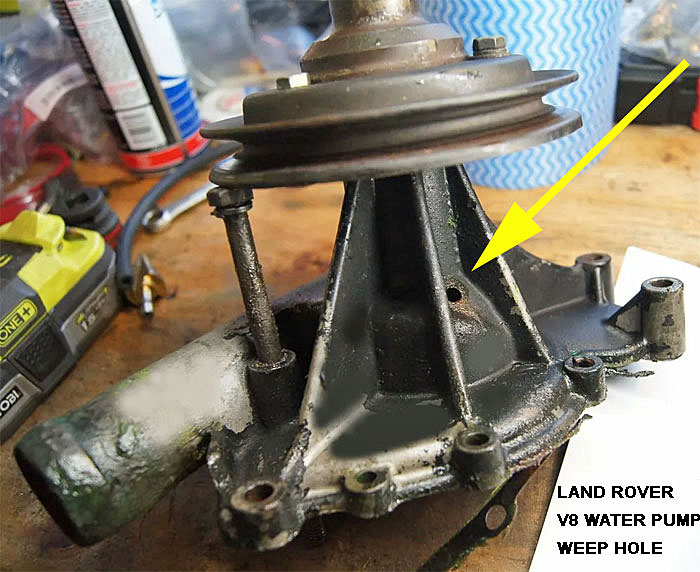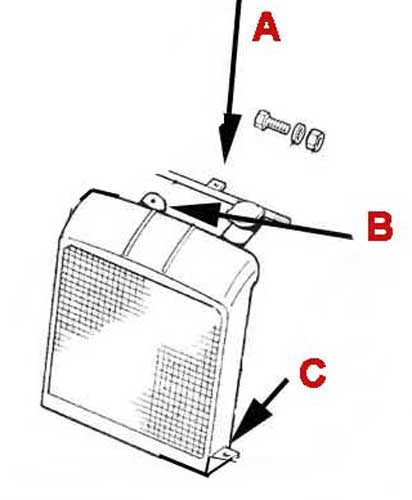WARNING II Coolant
system leaks are warning signs of a pending need for an important
repair. For example, all water pumps inevitably fail. Some sooner than
others. Because of that, many water pumps (I have seen such warning system with other water pumps, in cars and trucks) have a built-in engine feature to warn owners of imminent failure. For example, those of the famous Morgan Plus 8 (1968-2004) are designed to leak from a hole made for that purpose. It can be found at the bottom of the water pump at pump's bearing internal location.
A leak
indicates that the bearing is about to fail which will make the entire
cooling system function fail completely. That other wise minor failure
can quickly lead to
MASSIVE damage if not soon noticed and addressed. Stop leak products,
notably Bars Leak, will prevent that warning leakage.
Additonally, Land Rover sarcificed coolant passage depth when they
moved to the 3.9 and later blocks. By the GEMS engines, this lead to
block cracking in cars with the engine..especially the 4.0s. Sady Stop leak has been recommended on more than one of the newer Morgan forums. Please beware. Your engine may depend on it.
To confirm, merely look underneath their water pump
or feel for this hole at the bottom of the pump. The same design feature
can be found in BMW V8s though I do not track their engines as closely.
|
 |

